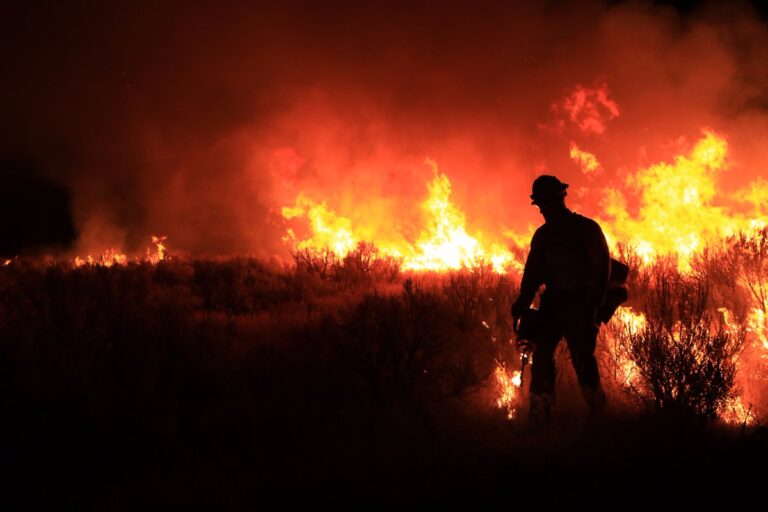Firefighters have reported that Western wildfires in the US are starting earlier in the morning and dying down later at night, hampering their ability to recover and regroup before the next day’s flareup.
A study by University of Washington and US Forest Service scientists has revealed why this is happening. The drying power of night-time air over much of the Western US has increased dramatically in the past 40 years.
“Night-time is an important time in fire management. When fires die down at night it gives firefighters a chance to rest, move equipment and strategize. The problem firefighters are reporting is an unexpected increase in night-time fire activity,” said lead author Andy Chiodi, a UW research scientist at the Cooperative Institute for Climate, Ocean and Ecosystem Studies, a joint center with NOAA. “Our findings support that this has been going on over the past 40 years over much, but not all, of the Western US.”
Warmer night air had been suspected as the culprit altering the daily pattern of wildfire activity, with burns continuing later into the night. The new study, however, shows it’s not just that the night air is warmer, but also a dramatic shift from 1980 to 2019 in its drying power – how much moisture the night-time air can carry away from the fuels – over much of the Western US. This shift is not captured in climate models, and the authors say it could be related to natural long-term cycles rather than to climate change.
“We paid special attention to the change in recent years compared to the conditions seen in the 1980s and 1990s, which is when many of the current firefighters started their careers, and presumably formed their ideas about what normal fire behavior should look like,” Chiodi explained. “We tried to quantify the changes that we were hearing about from firefighters.”
The study looks at the vapor pressure deficit, or the difference between the moisture in the air and the saturation moisture level at that air temperature. This difference is a measure of the air’s drying power.
“In the southern Sierra Nevada, the average summer night-time vapor pressure deficit for the recent decade was 50% higher than the average in the 1980s and 1990s,” Chiodi said. “I was surprised – it’s unusual to see geophysical data change that dramatically.”
Some of this shift in vapor pressure deficit is happening because warmer night-time air, caused by climate change, produce higher saturation values. But part of the drying power is happening because the night-time air in some regions has less moisture, and that effect is not predicted by climate change models, at least this much or in this pattern. The authors find a possible connection to the Pacific Decadal Oscillation, a long-term cycle that can influence inland weather.
The analysis used hourly weather outputs from the European Centre for Medium-Range Weather Forecasts. The recently released hourly reconstructions of historical weather allowed investigation of daily cycles. The next step is to further explore the causes of these changes in night-time vapor pressure deficit.
To read the full study, click here: Multi-Decadal Change in Western US Nighttime Vapor Pressure Deficit.



